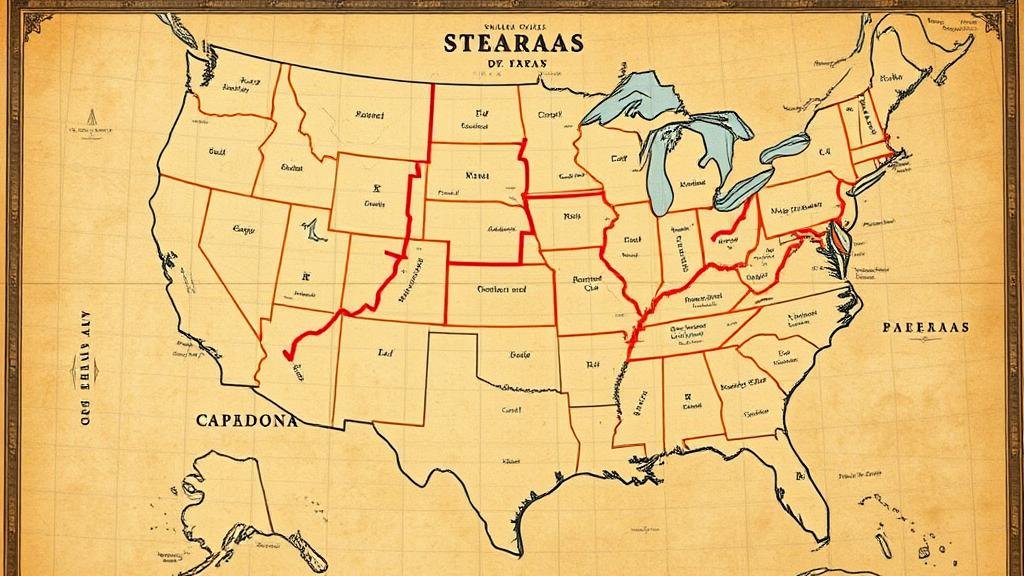Recognizing Secret Land Divisions in Maps Created by Early Settlers
Recognizing Secret Land Divisions in Maps Created by Early Settlers
The study of historic maps created by early settlers is crucial for understanding land use, ownership, and settlement patterns. These maps often contain complex land divisions that were informal or undocumented, potentially leading to modern disputes over property boundaries. This article aims to provide a comprehensive overview of how to recognize and interpret these secret land divisions, the significance of these findings, and techniques utilized by historians and archaeologists.
The Historical Context of Land Divisions
Understanding early land divisions requires a grasp of the historical context in which they were created. During the colonial period in North America, for instance, land was often divided according to various systems including the metes and bounds system, which relied heavily on physical landmarks and arbitrary measurements. In contrast, the rectangular survey system used in the Midwest organized land into a grid of townships and sections, aimed at maximizing agricultural efficiency.
- Metes and Bounds: This method involves defining a parcel of land by its boundary lines, landmarks, and distances. The surveyor often relied on natural features such as rivers or trees.
- Rectangular Survey System: Introduced by the Land Ordinance of 1785, this system subdivided land into a grid, creating a more standardized and accessible process for land sale and distribution.
To illustrate, the Massachusetts Bay Colony utilized the metes and bounds method extensively, resulting in quirky parcel shapes often following the contours of the terrain. On the other hand, the rectangular survey utilized by settlers in the Midwest produced a more systematic arrangement, allowing for easier navigation and development.
Identifying Land Divisions in Early Maps
Detecting secret land divisions in early maps is akin to piecing together a puzzle. Many historians and cartographers rely on specific indicators to identify these divisions:
- Boundary Markers: Sometimes, secret divisions are subtly indicated by boundary markers or descriptions found in surveys or land grants. Anomalies in property shapes can point to historical agreements.
- Overlaying Modern Maps: By superimposing current maps over historical ones, researchers can highlight discrepancies and uncover hidden divisions.
- Oral Histories: Local legends or stories passed down can provide clues about former land uses or ownership patterns that are not represented in formal documents.
For example, the town records of colonial Virginia frequently include informal agreements between landowners that did not result in legal documentation but dictated usage and access across neighboring properties.
Case Studies: Analyzing Secret Divisions
Several case studies exemplify successful identification of secret land divisions in maps. One notable study in Connecticut revealed how informal agreements among settlers led to unrecorded divisions of land that impacted modern property lines. Researchers analyzed old land grant maps alongside court records to uncover these informal arrangements.
Another significant example occurred in Pennsylvania, where the analysis of early surveying maps revealed discrepancies in land division. The study demonstrated how colonial families utilized informal paths and boundaries that helped define their territories–often leading to contemporary boundary disputes.
The Significance of Recognizing Land Divisions
Recognizing secret land divisions plays a crucial role in several domains, including:
- Legal Disputes: Understanding historical divisions can assist in resolving modern property disputes by providing context to land ownership.
- Cultural Heritage: Identifying traditional land divisions allows for the preservation of cultural narratives and historical significance related to specific plots of land.
- Urban Planning: Planners can better understand historical land use, helping inform future developments and land conservation efforts.
A practical illustration can be found in recent urban redevelopment efforts in Boston, where historians studied the citys colonial land divisions to maintain the preservation of culturally significant sites while also allowing for modernization.
Actionable Takeaways
For those interested in exploring secret land divisions in early maps, consider the following steps:
- Engage with local historical societies to access archive maps and documents.
- Use GIS technology to overlay historical maps with current land boundaries.
- Conduct interviews with local historians or long-term inhabitants to gather oral histories.
By adopting these methods, researchers, historians, and property owners can gain invaluable insights into the historical intricacies of land use and ownership, ultimately fostering a deeper understanding of our shared land heritage.


